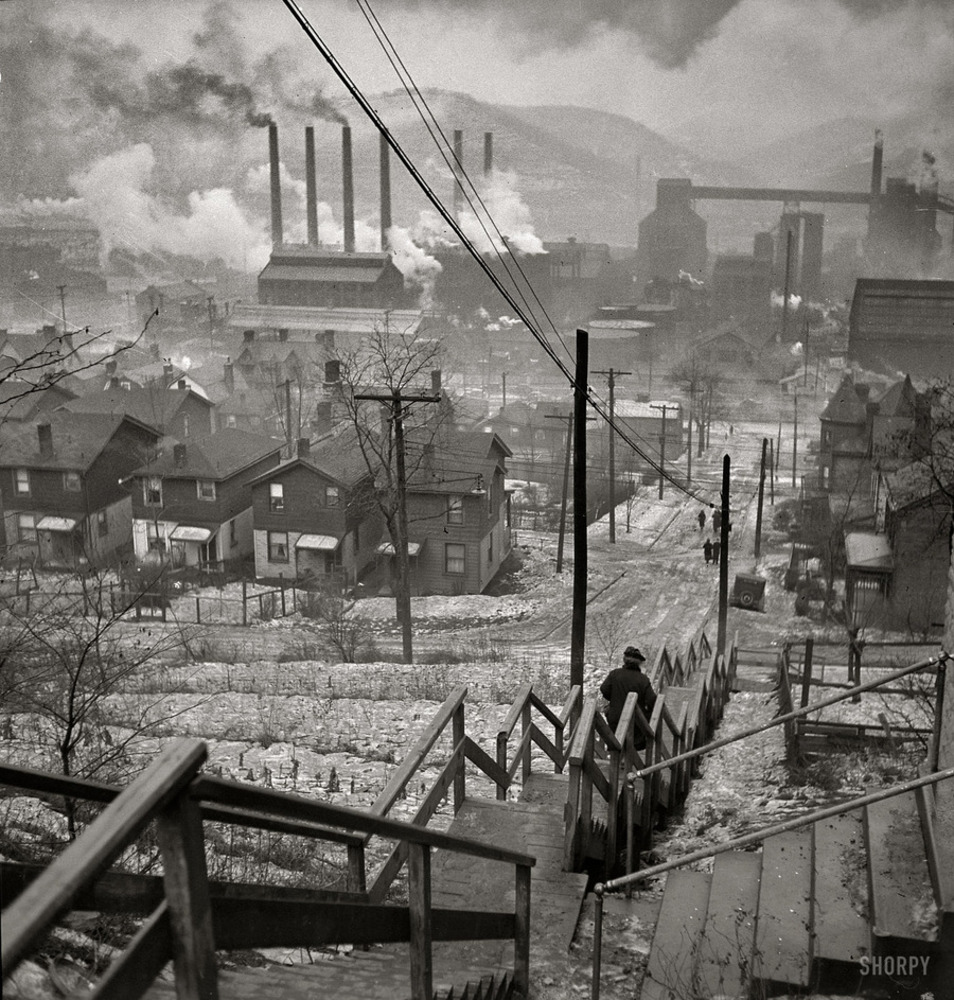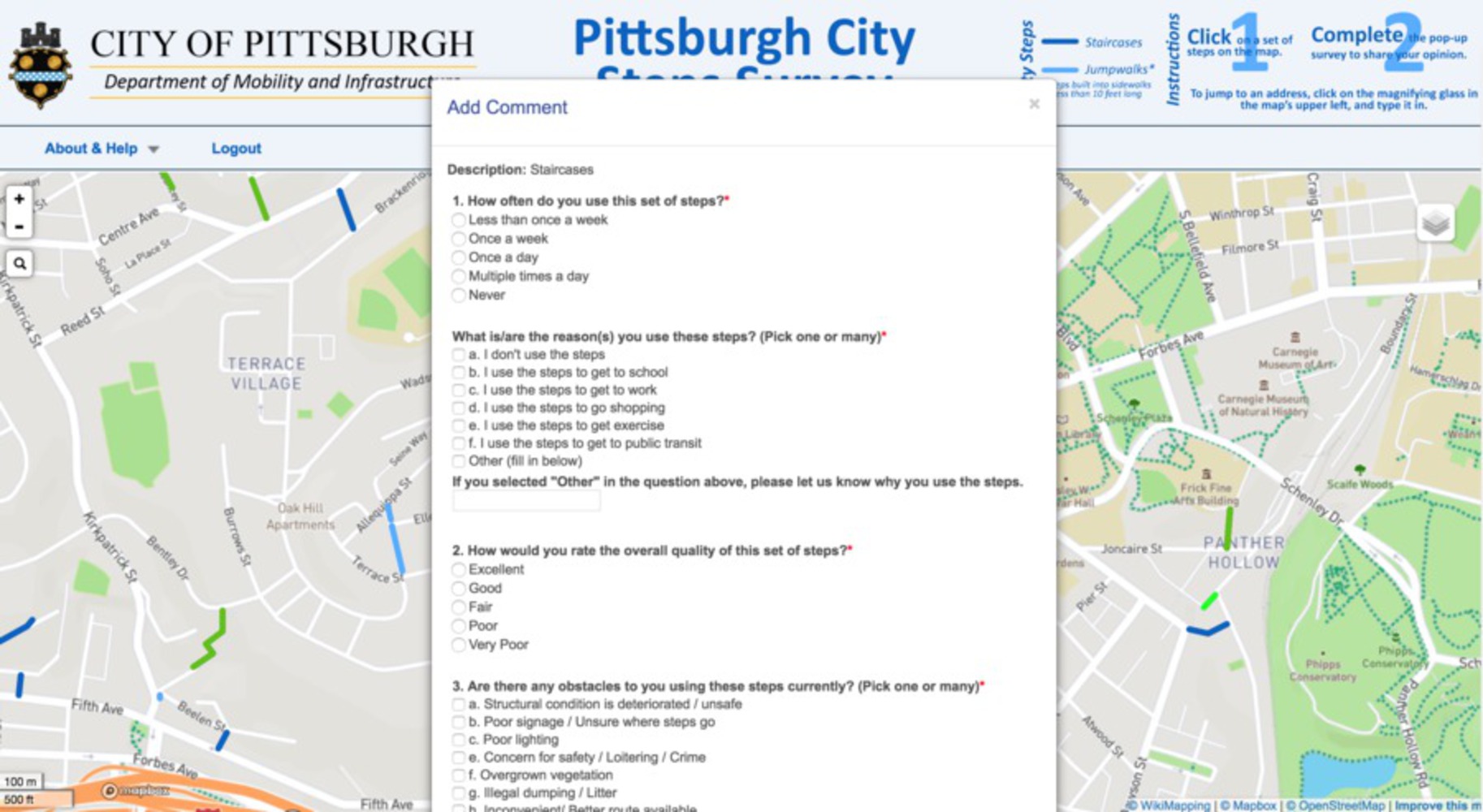Preamble
For the final project, I decided to continue exploring the steps of Pittsburgh, which were part of a previous analysis over three neighborhoods regarding walkability issues. In the former project, I concluded that part of the unique characteristics attributed to different parts of the city has a strong correlation with topographic barriers, planning zones and in some cases public investments on the local infrastructure. The steps are one of these distinctive conditions, and it could not be possible to imagine a city like Pittsburgh, with its rolling hills and valleys, without such a primary pieces of infrastructure.
To continue the exploration around Pittsburgh Steps, I decided to dive into the historic legacy of the staircases.
According to Bob Regan's book Pittsburgh Steps:
"Pittsburgh variation in topography has also had a socioeconomic influence on the area. The flat land adjacent to the rivers was considered prime land for the area's many steel mills. Consequently, the only affordable, inhabitable land for the common people was on the hilltops or, in some cases, along the hillsides. In order for workers to travel to work, a series of steps were built to the steel mills."
Taking the opinion of this distinguished historian and professor at the University of Pittsburgh, the steps of Pittsburgh represent not an ornamental feature in the urban landscape, but a practical transportation component that enables the essential commutes to happen in a time when cars or public transit was not even developed. The same author adds to the previous quote:
"Originally the steps were privately built, but soon formal steps along rights-of-way were constructed by the municipality. The steps essentially became legal streets. These city steps were, in essence, the city's first mass transportation system. Subsequent to this primary need, city steps were also constructed throughout the city whenever steep topographic relief inhibited conventional street construction or to offer hilltop dwellers access to the lower environs."
Thus, I can infer that despite its initial development, the further development of tramways, buses and streets systems made it possible for the composition of the city to expand to accommodate a "modern" living modality. Therefore, it was no longer desirable to live near steel plants, or simply citizens could afford to avoid the unevenness of the hilly city. Even though the steel plants are no longer by the rivers, the steps were never completely abandoned and have managed to remain until now.

